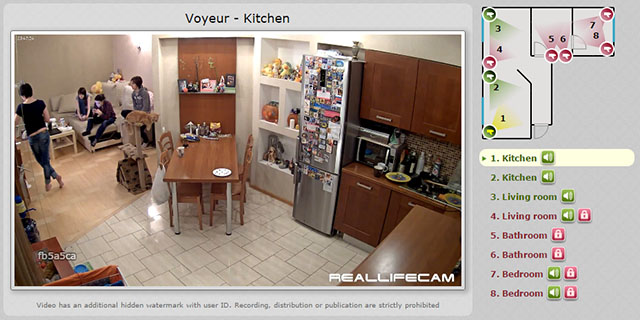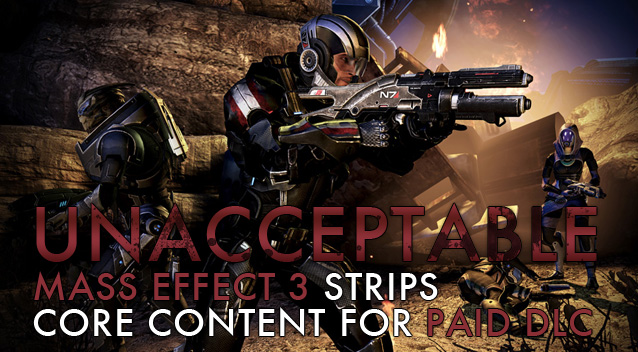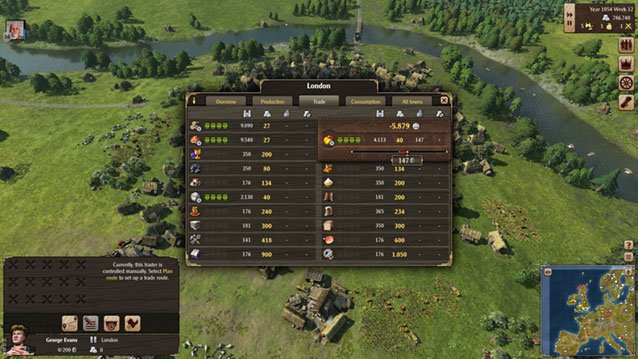

I still remember the first time I landed on Mun—planet Kerbin's closest moon. It was on the back of many failures; of countless times where my design, planning or ability fell short. One rocket would be too heavy, another too inefficient, another too explosive. I'd mess up my landing, splattering my little green astronauts all over the moon's jagged craters; or I'd fail to break out of Kerbin's atmosphere entirely, spinning them out into a watery grave. One time I ran out of fuel 5,000 meters above Mun's surface, and, unable to slow my descent, watched helplessly as they exploded on impact. It was heartbreaking.
Out of the countless defeats and sacrifices eventually came the answer. The successful rocket was ramshackle and ugly. It was the result of a hundred inelegant solutions to unforeseen problems. Nevertheless, it held steady through the launch ritual: keeping straight through the initial 10,000 meter ascent, the smooth transition to a suborbital arc and the controlled burn at the 70,000 meter apoapsis, first to orbit, then out of Kerbin's influence and into an encounter with Mun. Before descent, I transferred my Kerbal to a lander bolted on top of the launch payload (an over-engineered solution to my earlier fuel shortage.) Then I landed, and took one small step onto the surface.
I tell this story because it remains one of my greatest achievements in a game. It was a proper achievement, too. Not a pat-on-the-back trophy, created to convey incremental progress, but the successful completion of a challenging, self-made goal. The entire process—from failure, to revision, to hope, to euphoric completion—cemented for me why Kerbal Space Program is one of the best games on PC. That this all happened two years ago is why it feels strange to be reviewing the game now.
Kerbal Space Program is about building and flying rockets into space. Chances are you already knew that, because it was first released, in alpha, back in 2011. Thanks to the strength of the core sandbox concept, its potential was evident from the start. The added tools and features of subsequent patches have only strengthened the game's ability to deliver on that initial promise of full space program management and execution. Kerbal Space Program was one of the few Early Access games that I felt comfortable giving an unreserved recommendation. It was brilliant then, and it remains brilliant now that it's updated to version 1.0 for an official release.
The latest update brings some significant improvements, but none of its individual additions dramatically change the game. KSP's major pillars have been in place for a while now. Updates were designed to extend these pillars, and over the course of years have shaped the game into what it is now. To an extent, version 1.0 is the ornamental entablature that completes the construction. It overhauls the flight model, aerodynamics and heat simulation, bringing them closer in line with real-world physics. This simulation is the key to what makes KSP so compelling, and so it's fitting that its completion corresponds with the proper release.
The other additions make for nice extras. There are new missions types, more ship parts, female Kerbal astronauts, revised graphical effects, and a new 'Engineer Report' panel that advises about obvious errors in a ship's construction. The tutorial has been expanded too, and—although it's unlikely to diminish how overwhelming KSP's first hours can be—it does a better job of teaching the fundamentals, and so arms you with the base knowledge necessary to learn from your own experiences and failings. In all, it's a solid update, but it doesn't really convey any sense of what it is that makes the game so good. To do that, you have to dive into the heart of Kerbal Space Program.
Sandbox mode is the purest distillation of KSP's essence. In it, you have an unlimited budget and full access to the game's many ship parts. Step into the Vehicle Assembly Building and you're given a list of components. What do you want to do? Well, go into space, probably. How? Er, rockets. Oh, and an engine. There are multiple different parts in multiple different categories, but you can make a functional rocket with just a few basic bits. The Vehicle Assembly Building is a WYSIWYG modular editor that lets you easily add parts until they resemble something vaguely approximating a ship's shape. Click on a component and it appears as a ghostly outline that follows your mouse. Move it towards a previously placed part and it will snap into place. If you want to get really fancy, you can rotate and offset parts, or place multiple of the same piece symmetrically around the existing build.
All done? OK, click on the launch button and your construction is moved to the launchpad. Now you're no longer the engineer, but the pilot. Your creation will wobble and shake, but, as long as you've adhered to basic symmetry, will usually stay standing. You gingerly press the spacebar to activate the launch sequence. What happens next will define which of a constantly expanding set of branching possibilities you'll be sent tumbling down. Did you accidentally activate your engine and parachute at the same time, causing your ship to spin wildly a few feet off the ground? Did you attach an engine with too little thrust, thus preventing your ship from making it even a few inches into the air? Did you forget to even fit a parachute, forcing you to watch helplessly as your astronaut suffers the inevitability of gravity? Did you successfully break out of the atmosphere?
Whether it's success or failure, what happens during the launch arms you with new information about how to proceed. Fix the launch staging; add a bigger engine; add a parachute; add more fuel tanks in the hope of achieving stable orbit. With each launch, and each subsequent mistake, you're forced to re-evaluate and respond. You'll learn to add fairings to smooth the airflow, to use stability assists to dampen roll, to more effectively pilot through the first 70,000 meters in order to maximise fuel efficiency. Slowly, as you find pieces vital to solving whatever problem that you face, that overwhelming list of components starts to make sense.
From there, the solar system is yours for the taking. Sandbox games are, by definition, without structure. Minecraft, for example, is ostensibly a survival game, but, beyond having to satisfy a few basic needs, offers no real progression in terms of mid-term goals. For some, that's the key draw; for others, a major weakness. Kerbal Space Program is—in sandbox mode, at least—similarly structureless. At the same time, it has a natural progression you can choose to follow. There's a moon, and then planets—each far enough away that visiting the next is a significant step up in difficulty. These are logical goals, but you aren't forced to pursue them. You could instead decide to become good at making space planes, for no other reason than that space planes are really hard to build.
Persistence is a crucial part of KSP, and additional goals form out of past launches. Take my Mun landing as an example. Yes, it was a great achievement, but no, it wasn't wholly successful. Most would probably agree that one of the key steps in sending an astronaut to the moon is bringing him back home again. I didn't do that. He's still up there, waiting for me to launch a rescue mission. And if you think he has it bad, at least he's more comfortable than the astronaut of a previous mission. He's stuck in orbit around the moon. It was that or crash into the surface. If something goes wrong on a flight, you can always revert back to the moment of launch. Often, it's more fun to accept the mistake and deal with the consequences.
The persistent nature of the solar system is also important for those players who aren't incompetent. After a certain point, it becomes impossible to build a rocket big and efficient enough to reach nearby planets. Through the use of permanent orbital stations and tankers, it's possible to create a series of refuelling pit stops for you to dock at along the way. In this way, KSP can be as simple or as complicated as you want. If you're happy paddling in the shallow end of the pool, it supports that. If you want to dive into the depths to chart every planet and moon, you can do that instead.
Science makes for really good game design, and KSP taps directly into that fact.
Make no mistake, whatever you choose to do, KSP is a difficult game. It's demanding from the very start, and does little to handhold you through what are, at times, some complex concepts. Its challenge is very particular, though. There's no bullshit to the difficulty—no special cases or rule bending set pieces. Through its basis in real world scientific principles, KSP's challenge is merely a bar it expects you to match. It's not arrogant, vindictive or malicious. It just is. Design a top-heavy rocket with more fuel tanks than stability, and it will fall over and explode. You're not judged for this failure, you're just left to discover it. This is physics, the game is saying. What did you expect? Its logic is grounded and real, and thus consistent and always fair.
It's intuitive, too. Again, take Minecraft—a sandbox game that grew out of a similar model of paid-for alpha access. That game hides its crafting options under layers of nonsensical design that, without access to a wiki, would be impossible to know. Physics, on the other hand, is a real and observable thing. Even if you don't know the hard science or understand the formulas, you can often instinctively tell why something isn't working. One of KSP's many strengths is that it lets the science lead the design. Progression and difficulty all emerge naturally from the forces it simulates and the tools you're given to overcome them. It's a battle of thrust versus gravity; of aerodynamics versus drag. Science makes for really good game design, and KSP taps directly into that fact.
As a simulation, it would be easy for Kerbal Space Program to feel cold and dry—like a game designed for an audience of tweed wearing, bushy eyebrow sporting physics professors. That it isn't is all down to the presentation, and the nature of the Kerbals themselves. They're clumsy, bumbling tinkerers—rated in-game for their courage and stupidity. It's the Kerbals that bring physics down to the layman's level. They're what stops KSP being about formulas and equations, and make it instead about slapdash engineering. In the context of Kerbal mission control, it makes sense that my moon lander was crudely bolted to the top of a barely functional ship. It makes sense that there's a Kerbal stranded in orbit—and that, years later, he's still wearing a big, shit-eating grin.
In a more serious game, the mistakes and failures would feel tragic, or worse, purely theoretical. The Kerbals bring much needed heart to the simulation, and also an element of slapstick. You feel bad when one dies, but not too bad. There's a consequence to the worst failures, but not a tangible punishment. KSP wants you to learn from doing, and the sacrifices along the way are emotional beats that make success more worthwhile.
If you do yearn for more structure, there's also a career mode. In it, you're put in charge of the full facility—managing every aspect from astronauts and R&D, to economics and contract fulfilment. There's a resource system that requires you to generate money, reputation and science. More money lets you improve buildings, in turn becoming more efficient and able to generate more complex ships. Reputation is earned by completing contracts, and is used to gain access to more complex missions. Science—arguably the most important of the three—lets you progress through a tech tree, unlocking new ship parts.
At the start of career mode, you're extremely limited in what you can build. The available solid-fuel booster won't get you far, and so you need to conduct experiments to unlock better equipment. A crew report will generate science, as will observing a vial of mysterious goo, or taking an EVA report on various biomes. It can be a bit of a grind, as you're encouraged to spend slightly too long repeating experiments in order to progress through to proper space exploration.
It is, however, a slightly smoother and easier start. With less ship parts available, you're given time to figure out what everything does. More importantly, the contract types can pose scenarios that can prove challenging even to those familiar with the game. I've spent plenty of time in space, but taking temperature readings at a specific height and location on Kerbin required a level of atmospheric accuracy that I hadn't previously been asked to achieve. It still feels like an area that could use some extra expansion. There are only so many contract types, and eventually I decided to abandon the career structure in favour of the continued pursuit of my own ambitions.
It's easy to see Kerbal Space Program as being about engineering and design. Often it is that: a game of tweaking a ship's centre of mass, of increasing stability, or of using the orbital map to perform a controlled burn to a distant destination. It is not, it has to be said, an especially good looking game. Planetary textures are basic and low-res. It looks utilitarian, which feels apt.
Occasionally, though, you'll be floating in space and the sun will emerge from behind Kerbin, or you'll catch the distant glint of another planet. At distance, the engine's lighting excels. In motion, KSP is fully able to sell the majesty and awe of space exploration.
It's a reminder: we did that. On the back of science, yearning and, yes, a nearly apocalyptic competition between two superpowers, we strapped people into giant combustible machines and shot them out of our planet. We did that, and it was amazing. Kerbal Space Program is a brilliant game for a lot of reasons. It's brilliant because of the robust simulation, because of the satisfying design tools, because of the variety and options, and because of the spectacular community that has generated hundreds of mods, guides and videos designed to help you achieve whatever you want to do. Most of all, though, it's brilliant because it holds a mirror up to one of humanity's greatest achievements, and only does so when you have the greatest possible appreciation for the skill, dedication and courage involved. It's a rare and wonderful game, and deserves the strongest possible recommendation.
Phil has been PC gaming since the '90s, when RPGs had dice rolls and open world adventures were weird and French. Now he's the deputy editor of PC Gamer; commissioning features, filling magazine pages, and knowing where the apostrophe goes in '90s. He plays Scout in TF2, and isn't even ashamed.
THE VERDICT



 Update Minecraft 1.9 with New Mobs, Dungeons and Blocks
Update Minecraft 1.9 with New Mobs, Dungeons and Blocks Walking Dead Set to Return on Previous-Gen
Walking Dead Set to Return on Previous-Gen Top 10 Things That Make Gamers Really Mad
Top 10 Things That Make Gamers Really Mad Mortal Kombat PS3 trophies list
Mortal Kombat PS3 trophies list Review - Grand Ages: Medieval
Review - Grand Ages: Medieval